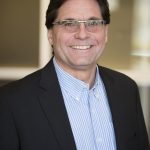Tell us about yourself and your responsibilities at Capital Safety.
Over the 30 years I’ve been with Capital Safety, I’ve held various positions in engineering support, quality assurance, customer support, marketing, and technical services. I have extensive knowledge in the areas of fall protection applications, product support and service, product development, and fall protection standards/regulations.
What can you tell us about the recent changes to the ANSI Z359 Fall Protection Code?
One of the most recent ANSI Z359 Fall Protection Code standards is ANSI Z359.7. This is a new umbrella standard, meaning it applies to all component standards within the Z359 family (i.e., it applies to the harness, energy absorbing lanyard, self retracting device, and anchorage connector standards within the Fall Protection Code). The ANSI Z359.7 standard is for testing and verification, and it requires all ANSI Z359 compliant products to be tested in an accredited laboratory to the most current version of the specific standard. All aspects and areas of the standard must be complied with.
While most manufacturers did test some items to the ANSI Z359 standards in the past, testing is now mandatory per the 359.7 standard. In addition, retesting is required to assure the products continue to comply; testing is required at least every five years if the manufacturer has a documented quality system, or every two years if no formal quality system is in place.
Is this standard something that will have to be adopted by all wind energy PSE suppliers?
ANSI remains a voluntary standard, but because of the mostly outdated, minimal OSHA standards that we have for fall protection, the ANSI Z359 Fall Protection Code is typically where most companies in any market or industry will look to for guidance and direction when it comes to protecting people working at height.
What steps are being taken by Capital Safety to have its equipment certified under the changes to the standard?
Capital Safety has always performed extensive testing and documentation on its products and has had its own accredited lab for about three years now. With that said, we still needed to conduct an extensive amount of testing to bring everything up to full compliance with the new standard. The documentation and making it available to customers was a large project, but one that the company saw as important. Customers can now go online via the Capital Safety website and download a certificate of compliance for all applicable ANSI Z359 complaint products.
What is the approval and certification process for products?
ANSI Z359.7 applies to all new ANSI compliant items being produced. Therefore, if it is marked as ANSI Z359 compliant, it has been thoroughly tested in an accredited lab. Most manufacturers have to go to an outside lab to have this testing done, resulting in a bit of a waiting period.
Over the past year or so, Capital Safety has been testing its products in its own accredited lab in order to meet the new compliance standard. If an item is not an active product in our manufacturing system, but someone requests that product be certified, Capital Safety would run the required tests. This normally amounts to no more than a week or two.
How will the changes to this standard benefit wind energy industry personnel, such as O&M techs?
Knowing that the products have been tested in an accredited lab should be important to anyone who has to work at height, and having the documentation available to prove it gives peace of mind. People using ANSI compliant equipment are assured that the product performs in accordance with the most recent standard.
For more information about Capital Safety’s line of safety equipment, visit en.capitalsafety.us. For information regarding the ANSI Z359.7 standard, visit en.capitalsafety.us/ANSI3597/tabid/3202/language/en-US/Default.aspx.








































